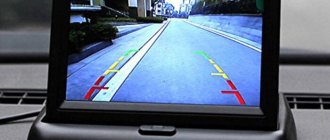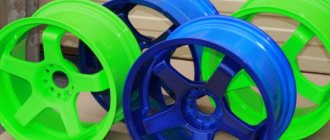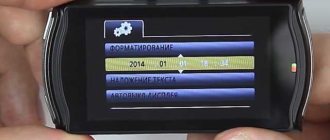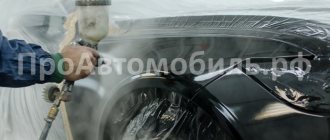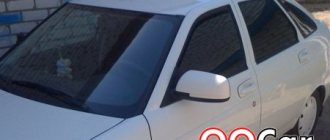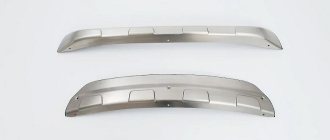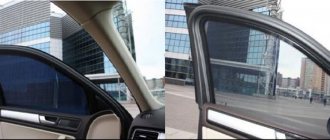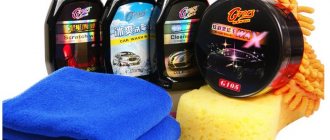The difference between alkyd paint and acrylic paint
Consumers are often interested in the question: which paint is better - alkyd or acrylic enamel and what is their difference.
In order to get an answer to these questions, you need to familiarize yourself with the purpose of each option, their differences in composition, as well as positive and negative qualities. Acrylic paint consists largely of acrylic, which, due to its chemical properties, is called a polymer emulsion. To give a substance color, color pigments are added. The main difference between enamel is the absence of the pungent odor characteristic of other substances, which is due to the use of water as a solvent. The composition also includes special additions that affect the material’s resistance to temperature changes and improve its viscosity.
Alkyd paint consists largely of alkyd varnish, color pigments and a kerosene-based solvent. Some paints contain additives that have fire-fighting, antifungal and antiseptic effects. That is why such enamels are often used for woodworking.
Details about acrylic paint and its use
First of all, let's consider the positive qualities of acrylic paints and enamels:
- Preservation of original properties even under high temperature influence. Thanks to this, the material can be applied to radiators and radiators of heating systems;
- Long service life. The paint used for wood can last up to 10 years, and for metal and plastered surfaces - up to 20 years;
- It is resistant to ultraviolet radiation, therefore suitable for external use;
- Protection against corrosion, which allows you to paint surfaces that have already appeared rust;
- Another good quality is that you can apply acrylic paint without fear of releasing harmful substances and an unpleasant odor.
But it is also worth considering the disadvantages:
- High cost compared to alkyd paints;
- Long drying time;
- Difficulty in acquiring the necessary and high-quality material.
In order to use acrylic paints well and efficiently, you must adhere to the following rules:
- Remove the old coating and very thoroughly clean the surface with sandpaper;
- Apply a special primer to prevent rotting;
- Add the required amount of water to the paint and mix the composition thoroughly;
- Distribute the mixture over the surface using special brushes and rollers.
Before painting with acrylic red, the surface must be very well cleaned of dust and other contaminants, and also dried no less well.
The process of preliminary preparation of a car body before painting
The preliminary area of the surface to be painted is thoroughly cleaned of old enamel, dust, and dirt. To carry out this procedure, you need to prepare a weak solution of ordinary water and detergent. The surface is degreased using white spirit, although any other solvent can be used.
Next, all unnecessary parts are disconnected - we leave only the surface of the “bare” metal, which, if necessary, is defective (mechanical damage is eliminated). To do this, you will need a sharpened screwdriver or chisel, coarse and fine sandpaper.
Important! Old paint and primer are removed, and scratches need to be removed using grout paper. After carrying out the damage removal procedure, you need to once again remove traces of abrasive from the surface of the car and degrease it using an alcohol solvent.
Next, if necessary, the required areas should be treated with a special putty for metal. This action is carried out in order to eliminate unevenness or deep dents on the body. After all the manipulations, you need to let the putty dry.
The final stage of preparing the car body for painting will be the final sanding of the required areas.
About the features of alkyd paint
About the advantages of alkyds:
- Low cost, which allows the material to enjoy unprecedented popularity among consumers;
- It is applied very simply and does not require the use of special devices;
- The best choice of colors, and an important difference is that all shades are very saturated and pronounced;
- Fast drying.
But alkyd materials also have disadvantages:
- Short service life, which can manifest itself in the form of characteristic yellowness and cracks just a year after painting;
- Instability to ultraviolet radiation and therefore the paint cannot be applied outdoors;
- When painting with alkyd paints, long-term ventilation of the room is necessary, since the composition contains toxic chemicals.
If there is an urgent need for external use of alkyd paint, you need to purchase a product with special improving additives. And if possible, place the painted surface in a shaded area.
It is also important to remember that applying alkyd-based varnish to alkyd paint is undesirable, but if absolutely necessary, you need to clean the surface with sandpaper and only then start working.
Technology of painting cars with alkyd paint
If the question arises about which enamel is best suited for protecting a car without taking into account time costs, then alkyd-based car paint is one of the most reliable means of protecting metal. The resulting coating resists all exposure to the sun, atmosphere, and chemicals. The shine of such a film can be compared to the shine of an acrylic coating, only at a lower cost and without a hardener in the paint (the material is applied to the car in 2 layers).
The durable film that is formed by synthetic resins is also considered a disadvantage of enamel: the surface forms quickly, and alkyd enamel takes longer to dry. Professional use of an alkyd helmet requires a special drying mode with increased heating and good ventilation. Since alkyd enamel for cars forms thick layers, you need to apply 1-2 layers. But, despite their good protective properties against atmospheric influences, alkyd paints do not inhibit the formation of corrosion, so such paint should be applied to a primed surface.
Use of enamels for cars
Now let's look at what enamel to use for cars: alkyd or acrylic? And what is the difference between alkyd paint and acrylic paint?
The place of primacy in this area is deservedly given to acrylic material. This is due to the fact that the product has good reflective characteristics and resistance to mechanical stress. In addition, the applied product dries quickly and gives minimal shrinkage.
Alkyd enamel for a car is not the best because it has a long drying period and does not provide such a uniform shine as an acrylic coating. The disadvantages of such auto enamel are compensated by its low cost. Also, here it is possible to apply one thick layer of alkyd, while acrylic auto enamel needs to be gradually painted in thin layers, each of which must dry well.
Acrylic and alkyd paints: compatibility
Can acrylic paint or enamel be applied to an alkyd coating and vice versa? This question is very interesting and also requires careful analysis.
Experts, in general, do not recommend applying acrylic to alkyd bases. Without treatment with a special primer and stripping, the service life of the coating can be significantly reduced. There is also a chance of successful painting. This depends on the unpredictable behavior of the compounds, which can swell or provide an ideal, flat surface.
If you apply an alkyd composition to an acrylic base, the result will definitely not please you. After a short time, the coating will begin to peel off.
If there is an urgent need to paint an alkyd surface with acrylic paint, you should perform several simple preparatory steps:
- Careful processing is carried out with fine-grained sandpaper;
- Acrylic primer is applied;
- The dried primer is coated with alkyd enamel (paint).
Thanks to the primer used and other preparatory measures, adhesion between materials is significantly improved, which significantly reduces the likelihood of peeling.
When applying acrylic paint to alkyd, the wear resistance of the new coating is reduced by 2 times.
Painting parts
The technological process of painting individual parts directly depends on their size. It is recommended to apply enamel to the roof, starting from the center, painting the vertical part from above. The distance from the gun and the viscosity of the enamel are greatly influenced. It is necessary to take into account that very diluted material will leak a little, and using a dry hardener and a small amount of solvent, the paint dries faster.
Sometimes the thickness of the layer can give a different shade, but in relation to materials based on alkyds, this is not so effective. Thus, the technology of painting parts with alkyd paint consists in their identical location in relation to the positions they occupy in the car. In this case, all changes that are associated with pressure and conditions are the same for all parts.
Forget about fines from cameras! An absolutely legal new product - Traffic Police Camera Jammer, hides your license plates from the cameras that are installed in all cities. More details at the link.
- Absolutely legal (Article 12.2);
- Hides from photo and video recording;
- Suitable for all cars;
- Works through the cigarette lighter connector;
- Does not cause interference to radios and cell phones.
Auto enamel of which company to choose
The car market is saturated with a variety of products for various purposes. One of them is enamels, necessary for repairing the bodies of light and heavy vehicles. These compounds are produced by large and small, well-known and not so well-known companies.
The following manufacturers are popular with buyers:
DuPont is the world's largest American company, founded in 1802. It produces chemical products, including high-quality paints and varnishes. The inexpensive line is represented by Duxone auto enamels.
Vika is a brand under which Yaroslavl has been selling paint and varnish materials since 2001.
Mobihel is a leading manufacturer of paints and varnishes in Central Europe. Its facilities are located in Slovenia.
How to coat acrylic paint with varnish
Paint manufacturers do not recommend varnishing the surface of the car after applying acrylic enamel. Initially, this substance is based on various components, including resins. There are thermosetting and thermoplastic acrylic varnishes. The first option is used only for factory painting of a car, and the second can be used if you are going to cover the car body with acrylic yourself.
Acrylic car enamel dries quite quickly. It has high durability and reflective properties. To make the surface more even, it is necessary to apply acrylic varnishes in two layers. This will also make the shade more saturated and deeper.
The best acrylic car enamels
Popular
Vika 2K AK-1301 – 2-component acrylic composition for repair painting of bodies and plastic parts. It is used for cars, motorcycles, trucks, and watercraft.
When preparing the surfaces, they are degreased, puttied, phosphated and sanded using materials recommended by the manufacturer. When mixing, 25% hardener and 38% thinner are added. Natural drying at +20 °C lasts 16 hours, chamber drying at +60 °C – 45 minutes. The number of layers is 2 or 3.
Advantages:
- no final varnishing required;
- ease of shade selection, ease of dilution;
- good adhesion with correctly performed preparatory work;
- quick drying, high quality coating;
- wide color palette, affordable price.
Flaws:
The paint goes on perfectly. After application, it smoothes out minor irregularities and forms an even glossy coating. Users are happy.
Prestigious
Duxone 2K is a 2-component facing mixture made from a base acrylic copolymer. Used to cover buses, cars and trucks.
It is part of the paint and varnish system, mixed with hardener in a ratio of 2:1, and can be easily tinted from more than 60 primary colors. It is characterized by balanced toners, the high viscosity of which makes it easier to create the optimal option. In addition, it dries quickly, is easy to polish, and has a good shine.
Advantages:
- ease of use - the liquid can be applied in different ways;
- the colors of the material in the jar and on the surface after painting are absolutely the same;
- all components are used only of high quality;
- excellent hiding power and good spreadability;
- coating strength, universal stability, high efficiency;
- real cost.
Flaw:
There are practically no complaints about the finishing material. Working with it is simple and easy - the results are excellent.
The best alkyd car enamels
Vika ML 1110 is a finishing agent made from alkyd resin, solvents, additives and pigments that are resistant to ultraviolet radiation and precipitation. Used for repairing car bodies, trucks and buses.
To prepare surfaces, degreasing with white spirit and wet or dry sanding are used. A thinner, for example, a solvent, is added at the rate of 3 to 10. Particular attention is paid to the drying mode - the paint hardens for 0.5 hours at a temperature in the chamber of +130 ° C. At +20 °C, the composition dries in 4 hours, but only when 1/10 of the IZUR catalyst by weight is added to it. The finished solution cannot be kept for more than 8 hours. Apply 2-3 layers with a sprayer on a “raw” surface.
Advantages:
- exact match of catalog and real color palettes;
- no smudges, good hiding power;
- “decent” quality when used correctly;
- reasonable price.
Flaw:
- If you fail to follow the technological process precisely, the paint may take several weeks to dry.
The enamel goes on smoothly and looks beautiful. In terms of quality/cost ratio, the composition is one of the best. The only thing is that not all users (at home) use the IZUR accelerator, as a result, the result is not quite the same as we would like.
Kudo universal is a popular paint based on pentaerythritol phthalate resins, used to coat the bodies of any vehicles, as well as pre-primed wooden and steel surfaces (both internal and external).
Before priming and finishing, the objects to be treated are sanded and degreased. Covering power is up to 60 g/m2, drying time at +20 °C is up to 5 hours. Before spraying the substance from a distance of 30 cm, shake the can for at least 2 minutes. Layers are applied at intervals of about 12 minutes.
Advantages:
- good quality, versatility and ease of use;
- full correspondence between demo and real colors;
- high adhesion, no streaks, quick drying, excellent shine;
- resistance to abrasion, as well as mechanical, UV rays and precipitation;
- cheap cost.
Flaws:
- odor and toxicity;
- Color may vary between batches.
There are minor disadvantages, but compared to the advantages they are insignificant. Due to their versatility, enamel spray cans are used not only for vehicle repairs, but also for domestic purposes.
The best metallic car enamels
Duxone basecoat is a composition with an acrylic copolymer base, used primarily for painting passenger cars. It is successfully used for local, unit and complete repair of coatings, both factory and secondary. Fits perfectly on any hard surfaces and planes created with DuPont primers.
Preparation is carried out with soapy water, degreasing, mechanical adjustment, dry and wet grinding. Finishing with the composition is carried out in 2 passes with a break of up to 15 minutes on the undried layer.
Advantages:
- ease of application, quick drying, ease of polishing;
- high quality components;
- ability to withstand chemicals for some time;
- excellent shine, long lasting color;
- strength, stability, efficiency;
- affordable price.
Flaw:
- hiding power and spreadability sometimes fail.
The material, the money spent on it, pays for itself completely. You can easily come to this conclusion if you compare the pros and cons given by users in percentage terms.
Efficient
Mobihel metalik is a professional composition for repairing and finishing buses, cars and trucks, as well as painting metal objects.
At the preparation stage, the surfaces are sanded and degreased, after which they are treated with 1st polyester putty and a universal 2K primer or 2K HS contact primer. To achieve a high-quality coating, sophisticated techniques and spraying methods are used, as well as proprietary thinners and colorless 2K acrylic varnish. The substance is applied in 2 or 3 layers with intervals of 1/4 hour. The paint dries completely within 40 minutes.
Advantages:
- mechanically and chemically resistant high-gloss coating;
- good covering ability and excellent consumer properties;
- rich color, high fade;
- wide range of colors;
- volumetric appearance, durability.
Flaw:
- n-butanol and xylene contained in the composition are harmful to health.
The reviews about this car enamel are mostly positive. The main assessment is its high popularity among users.
Types of paints for car coatings
To paint the external surface of the car, you can use different types of paints:
- Cellulose. Such dyes can be applied in any room. They dry quickly, so particles of dust and other contaminants do not have time to settle on the painted surface;
- Acrylic. The most commonly used are thermoplastic ones, which dry at normal air temperatures. The advantage of this paint is that the treated area acquires a uniform color. It is also resistant to mechanical and chemical influences;
- Glyphthalic auto enamels. Such paints create thick layers of protective film. The painted surface does not require additional polishing, since after painting it becomes shiny. Drying at a temperature of 25 degrees Celsius can last up to a month. At 60-80 degrees, less time is required;
- Alkyd paints. Car enamels with high resistance to all kinds of influences, the reasonable cost of the paint allows people of all incomes to purchase it. The only negative is the long drying time of the painted surface;
- Powder paints. They are applied using special equipment for the car painting procedure. This type of paint is durable and economical to use, environmentally friendly and can achieve various effects;
- Water based paints. Due to their environmentally friendly composition and high durability, they are very popular. But the drying time of the coating is quite long.
The best car enamel pencils
Practical
Mobihel Pencil is a hand-made product for fixing scratches, chips and abrasions. Suitable for repairing any types of vehicles: buses, trucks, cars.
The pencil is filled with a proprietary composition of 12 ml. After using paint of the desired color, the effect is secured by applying 1K clear varnish. Thanks to the small size and convenient shape of the tool, the enamel is applied evenly and in the required quantity, and after use the rod retains its properties and, if necessary, is reused.
Which car enamel to buy
Choosing automotive enamel is not as simple as it seems at first glance: you need to take into account many nuances that will ultimately affect the technology of applying the composition and its drying, the use of equipment and determining the maximum air humidity. The degree of corrosion protection, spectacular appearance, durability of the coating and color saturation will depend on the result.
In general, the material consists of a film-forming binder, solvent, filler, coloring and special pigments that create a metallic effect. When choosing, the issue of hardness is also decided, which should be different depending on the operating mode. The soft coating, resistant to vibrations, polishes well, but is easily scratched, and vice versa. Therefore, the proposed options do not claim to be the ultimate truth.
1. Suitable for a passenger car: Duxone basecoat, Duxone 2K, Vika 2K AK-1301.
2. The truck can be finished with Vika ML 1110.
3. A good option for painting a bus is Mobihel metalik.
The best option would be to determine the color code of the vehicle and use it to buy the desired car enamel. As always, finances play a significant role in the acquisition of a particular brand. It’s good when the request and possibilities in this regard are compatible.
Friends will also be interested in this
Do you want to receive up-to-date ratings and selection tips? Subscribe to our Telegram.
The process of painting a car with enamel
The primer is applied in 1-2 layers depending on its composition and consistency.
Expert opinion
Ilya Vyacheslavovich
Consultant for body repair at krasymavto.ru
Ask a Question
It is best to use GF-021 on an alkyd basis. The GF-021 primer is not absorbed into the metal surfaces being treated, but coats them with a protective anti-corrosion layer. GF-021 can be used in the temperature range from -45 to +60 ˚C.
When applying a layer of the substance to a metal surface, the ambient temperature should not be less than +15 ˚C. Primer GF-021 is applied to the body using a spray gun, brush or roller. Using a spray bottle will be better and more economical. Before using GF-021, it is necessary to mix thoroughly.
In order to avoid smudges, it is necessary to apply the paint with horizontal movements from top to bottom. After completing the rough work, when the primer has been applied over the entire surface, you need to let the body dry and then apply a second, adjustment layer of GF-021 for final polymerization (hardening at the molecular level). This completes the body priming.
If unplanned drops of soil are obtained, it is possible to wash them off even after complete drying using a solvent. When painting a car body, when urethane enamel is used, all the same rules and sequences are followed that were followed when applying GF-021 primer. It is not recommended to use solvent because there may be discrepancies in paint shades in different places. You can see more details about priming a new part and painting a car part with alkyd enamel in the video below:
After completing all painting work, you must allow the paint to dry completely. This process is strictly prohibited from being carried out in the open sun. Otherwise, the paint may peel off, smudges may form, and the paint pigment may partially burn out. It is necessary to dry the car in a closed garage for as long as it takes to dry completely. Typically this time is 3-5 days.
While the paint is drying, you need to protect the painted surface from dust, fuels and lubricants, alcohol solutions, and you should also avoid getting solvent on the surface. Priming and painting work must be approached carefully and attention to every detail must be paid.
Important! In case of poor-quality cleaning of the body, unscrupulous removal of dents, or cleaning of problem areas after drying, the paint cracks and falls off in pieces.
If you have any doubts about the possibility of high-quality implementation of the work yourself, it is recommended to contact the appropriate qualified specialists. They have the necessary skills to carry out such work. In addition, all work is performed with tools specially adapted for a certain type of work.
Alkyd is a budget option
Alkyd paints and varnishes differ in composition from acrylic ones. They use polyhydric alcohol and orthophthalic acid. When dried, an inelastic film is formed. To fix this, natural oils are added to the composition.
The composition of alkyds is polyhydric alcohols and orthophthalic acid. The alcohol component varies, so paint is divided into pentaphthalic and glyphthalic.
Advantages
The main advantage is low price. Thanks to it, you can paint a large area on a small budget. You also do not need to have any special skills to use this type.
Dries quickly - in a few days. Moreover, after 60 minutes you can already apply the second layer. The surface painted with alkyd paint is resistant to chemicals and adverse environments.
Flaws
Although this variety is resistant to chemical attack, it is not resistant enough to mechanical damage. Therefore it is short-lived. This becomes visible when the paint turns yellow and cracks after a year and a half. This instability extends to solar exposure. Due to ultraviolet radiation, paint fades over time. Therefore, it is not advisable to use it for painting facades. It is also harmful to health and has a pungent odor. The room needs to be ventilated and the smell will completely go away within a day.
Physical and chemical properties of alkyd auto enamel
Alkyd paints are a common type of paint and varnish material suitable for painting vehicle body surfaces. Thanks to its use, the maximum effect of painting the car body will be achieved.
Alkyd paints – avtomaler-plus.com.ua
Advantages of the paint:
With regard to chemical and physical influences, alkyd auto enamel is distinguished by its resistance. It forms thick layers, which helps reduce the number of painting stages. Also, it contains polyhydric alcohols and orthophthalic acid. Auto enamel penetrates deeply into metal planes. This is a guarantee of its durability on the body surface. Compared to acrylic paints, the film of alkyd paints is more durable.
Specifics of using alkyd types of paints
When working with alkyd paints and varnishes, the prescribed rules of use must be followed. In particular, it must be diluted with certain types of solvents recommended by the manufacturer. Thanks to this, the declared color brightness will be achieved.
To decorate car body parts without a shiny effect, you can use matte alkyd auto enamel. Since it contains a number of chemical components, it has a specific odor. Also, the disadvantages of this paint include its long drying time, and there is a risk of smudges. Taking this into account, painting a car with this substance should be done in special chambers (convection chambers) where there is good ventilation.
Paint is applied to the pre-primed car body in 1 or 2 layers. It takes several hours for the painted body surface to dry completely. As a result, a high level of protective properties is achieved. When applying alkyd car paint to a body, it is advisable to use a spray gun, the operation of which requires certain skills.
Thus, car paint should not only give the vehicle an attractive appearance, but also protect the body from corrosion. Alkyd types of paints have these characteristics. They contain persistent pigments. It will not change its color for a long time.
Source
Acrylic paints - the optimal solution
The basis of this type is polyacrylic polymers. This polymer is also called plexiglass. Additional substances are also added that improve elasticity, stability or drying speed. These are the main differences between acrylic paint and alkyd paint.
It adheres well to the surface, retains its appearance and does not change color at high temperatures. Resistance to high temperatures allows it to be applied to radiators and other high-heat areas. Over time, it will not crack and retain its natural color. Also suitable for facade work. Acrylic does not fade or crack under the sun. Service life more than 8 years.
In addition to what is written above, acrylic is resistant to sunlight and has high fire safety. Does not crack and retains color. It is used to coat metal and wooden products. Compatible with pastel colored stains. When painted with acrylic, the product continues to “breathe” due to natural ventilation. The presence of special additives allows you to paint coatings with rust and subsequently protect them from corrosion.
Let's highlight two main advantages - it is non-toxic, since it does not contain organic solvents. When it dries, the water evaporates, not the chemical composition. Therefore, there is no smell, which is important when working indoors. How long does this car paint dry? Depending on the environment - from 30 minutes to several hours. If you get it in the wrong place, you can easily wipe it off without damaging the surface. There are practically no disadvantages to the acrylic type, the only thing is that it costs more. But the price is justified by the quality and brands that make it. The conclusion suggests itself - acrylic paint is safer for health and more stable than alkyd paint.
What else you need to know
Compatibility
Acrylic and alkyd are not compatible with each other. Applying one to the other can lead to unpredictable consequences. Alkyd paint and enamel may simply not adhere to the acrylic surface and will peel off. Acrylic applied to an alkyd surface can behave well (in exceptional cases) or poorly. In the second case, swelling will occur. Therefore, we do not recommend mixing different types.
RAL color standard
RAL color standard using Nowax acrylic paints as an example
Developed in Germany in 1927. Initially it consisted of 40 colors. Now there are 213 of them, including 2 iron, 5 luminescent and 15 pearl colors. RAL is a popular color standard used in all industries that require a clear definition of color.
General characteristics of alkyd coating for cars and difference from acrylic
When choosing a paint coating, you must first pay attention to how long the enamel will meet the required characteristics.
Important! Acrylic paints, glyphthalic, cellulose and other enamels retain their properties for approximately three years, while alkyd-styrene and urethane paints have a service life of approximately 5-6 years.
This allows you to expand the scope of its use in different climatic conditions without fear of premature wear. Resistance to minor mechanical damage will help avoid minor scratches of both the coating itself and the metal it protects.
When applied, urethane paint forms a thick layer of coating, which reduces the number of applied layers and material consumption. It is not recommended to mix this paint and solvent. It is possible to dilute alkyd enamel with a compatible paint solvent, for example Vika 60. Alkyd urethane paint has the following negative aspects of use:
Information! To achieve the maximum required effect, it is necessary to properly prepare the surface to be treated.
It is recommended to use products of the same chemical composition, so it is best to use alkyd primer. This additional layer of protective coating reduces the possibility of moisture penetration onto the car body to zero, and also compensates for the deficiencies in the corrosion protection of the main paint coating.
How does alkyd paint differ from acrylic paint and which is better?
With all the variety of paints and varnishes, we mainly have to deal with the two most common bases for paints and varnishes - alkyd and acrylic. Let's try to figure out what the difference is and what you need to know before going to the store. Alkyd paints and varnishes have long occupied a leading position, while acrylics were developed much later, but are becoming increasingly widespread.
Alkyd and acrylic enamel: difference in composition
Alkyd film formers are low molecular weight polymers obtained from a mixture of alcohols and polybasic acids by polycondensation in the presence of fatty acids. Easily modified. Protective films are formed as a result of a chemical reaction - oxidation with atmospheric oxygen. Organic compounds are used as solvents.
Polyacrylates are high-molecular polymers obtained by the polymerization of methacrylic and acrylic acids and their derivatives. Films are formed mainly without a chemical reaction. The use of various auxiliary monomers can significantly change the characteristics of materials. The range of polyacrylates produced is very wide, ranging from hard plastics (plexiglass) to soft elastomers (artificial rubbers). They can be dissolved by both organic compounds and water. They have proven themselves to be excellent as the basis for water-dispersion paints.
What is the difference between alkyd and acrylic paint: comparative analysis of characteristics
Acrylic enamel for floor
Same level of properties:
- water resistance;
- resistance to solvents, acids and alkalis;
- heat resistance;
- hardness;
- Application of paint by brush, pneumatic and airless spray.
Properties in which alkyd binders are superior to acrylic ones:
- wear resistance;
- applying paint with a roller;
- time to fully gain strength.
Properties in which acrylic binders are superior to alkyd ones:
- transparency and colorlessness;
- gloss durability;
- weather resistance (light fastness, resistance to ultraviolet radiation and temperature changes);
- resistance to water vapor, diluted acids and alkalis;
- elasticity, resistance to impact and bending;
- durability, resistance to aging;
- environmental friendliness;
- good grinding and polishing ability.
It should be borne in mind that the evaluation characteristics are general in nature, so in some cases the properties may not correspond to the given data, for example, acrylic floor varnish has very good wear resistance.
Acrylic or alkyd paint, which is better?
In terms of weather resistance and durability, acrylic materials are clearly superior to alkyd ones, which makes them indispensable for outdoor work. The advantages of alkyd impregnations for exterior use are explained not by the protective properties of the material, but by the depth of penetration into the protected wood.
In terms of drying time, acrylic enamel is superior to alkyd; it dries faster, but it takes a much longer time to gain maximum strength, often up to several weeks.
When working on wood, both types of paints are used, but acrylic varnish is more often used. When working on metal, alkyd enamel is quite competitive. Due to their increased elasticity, acrylic paints are widely used for fabrics, leather and paper.
Acrylic enamel for cars is increasingly replacing alkyd enamel due to its high performance properties and durability of the coating. Acrylic-based primer is widely used in construction.
A significant advantage of acrylic paints and varnishes is their environmental friendliness. The minimum content of organic solvents, and their complete absence in water-dispersion paints, allows us to minimize the amount of harmful emissions during painting and operation.
What can we say in the end?
In the automotive market, acrylic paint is still one of the undoubted leaders among painters. This is justified by the low price in comparison with the same metallic, xerallic or mother-of-pearl. Good performance characteristics, high drying speed and the classic appearance of the acrylic helmet-painted surface of the part, which is very similar to the factory layer, make it more popular among competitors. It is chosen by comparing it with nitro enamel, which also has its advantages and many people use this coating in their work.

